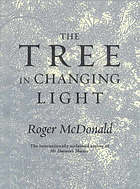What do you think?
Rate this book


177 pages, Hardcover
First published January 1, 2002
...the planter dropping to the knee, or to both knees in a quick unconscious plea for life backed by a dirty finger-nailed routine of plastic casing off, naked root shaft palmed this way or that, then into the ground, a bit rough, planting out was all like that. (p.3)
At the back of childhood, long before I was born, my mother ran alongside a paling fence with wet potato sacks, beating out flames that rushed through the grass towards her parents' farmhouse. Her mother was ill inside the house and her father was away fighting the fire on another front where it was expected to be worse. Overhead the sky was a dense, scrolled blue, with ash and cinders raining down. Across the eucalypts at the far end of the paddocks orange sheets of flame shot up and exploded into leaf-heads of volatile oil in a crown fire. It had leapt the Glenelg River and only my mother was there to save the house. (p.11)
I became the first person on my father's side of the family to go to university, became a teacher, worked in broadcasting. I worked as a book editor. Nothing felt settled until I started writing novels and found myself living back in the country again. (p.20-21)
Tom never cared about the names of trees, never minded how trees were otherwise defined, what their botanical names were, or why they grew where they grew, or how. He remembered Krishnamurti's guiding idea from the age of eighteen, when he first read it: 'When you name something you think you've seen it.' The light around the trees he painted had an emotional content, he said, and that was what it was for him.
It was interesting. He could no more give a name to that emotional content than he could give a name to the trees. (p.66)